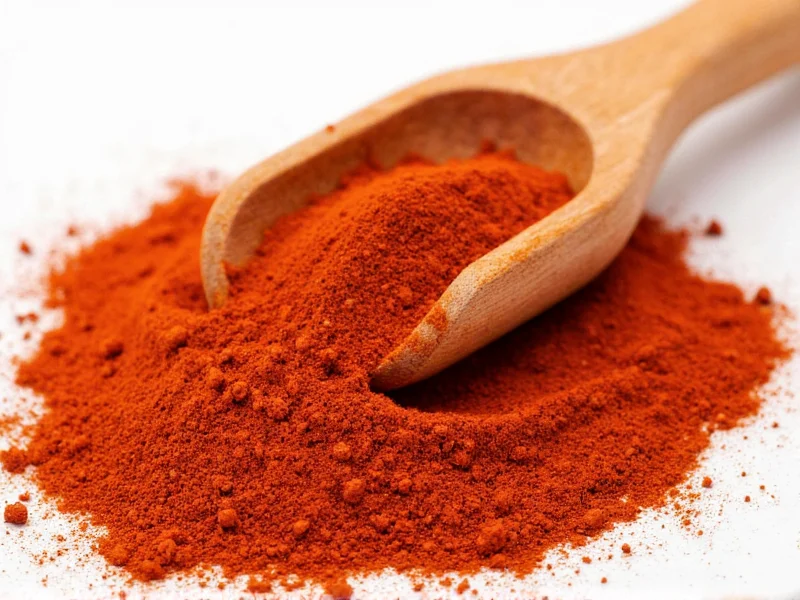When you're mid-recipe and realize you've run out of chili powder, cayenne pepper makes a practical substitute with careful measurement. Understanding the critical differences between these spices ensures your culinary creations maintain their intended flavor profile without unexpected heat spikes. This guide provides exact substitution ratios, flavor considerations, and practical cooking applications for when you need to use cayenne as a chili powder alternative.
Understanding the Fundamental Differences
Chili powder and cayenne pepper originate from different chili varieties and serve distinct culinary purposes. Standard chili powder typically contains a blend of mild chilies like ancho and New Mexico peppers, often combined with cumin, garlic powder, and oregano. This creates a complex, earthy flavor profile with moderate heat. Pure cayenne pepper, however, consists solely of ground cayenne chilies, delivering intense heat with minimal flavor complexity.
Many home cooks mistakenly believe these spices are interchangeable without adjustment, leading to ruined dishes. The heat differential explains why direct 1:1 substitution fails—cayenne registers between 30,000-50,000 Scoville Heat Units (SHU), while standard chili powder measures only 1,000-2,500 SHU. This means cayenne brings approximately 15-30 times more heat than typical chili powder blends.
| Spice | Scoville Heat Units | Flavor Profile | Substitution Ratio |
|---|---|---|---|
| Standard Chili Powder | 1,000-2,500 | Earthy, smoky, complex with warm spices | 1 teaspoon (base measurement) |
| Pure Cayenne Pepper | 30,000-50,000 | Sharp, intense heat with minimal complexity | 1/8-1/4 teaspoon |
| Chili Powder with Cayenne | 5,000-8,000 | Moderate heat with traditional chili powder notes | 1/2-3/4 teaspoon |
Practical Substitution Guidelines
For successful substitution, follow these evidence-based recommendations:
Basic Ratio Application
Start with 1/8 teaspoon cayenne per 1 teaspoon chili powder for delicate dishes like soups, sauces, and baked goods. Increase to 1/4 teaspoon only for robust recipes such as chili con carne or hearty stews where additional heat complements other strong flavors. Always add cayenne gradually, tasting after each addition—remember you can add more heat but cannot remove it once incorporated.
Flavor Compensation Techniques
Since cayenne lacks the complex flavor notes of chili powder, compensate by adding complementary spices:
- Mix 1/4 teaspoon cumin with your cayenne measurement for earthy depth
- Add 1/8 teaspoon garlic powder to replicate traditional chili powder blends
- Include a pinch of oregano for authentic Southwestern flavor profiles
When This Substitute Works Best (and When It Doesn't)
Cayenne serves as an effective chili powder substitute in specific applications. Use this alternative successfully in:
- Meat rubs: The intense heat penetrates proteins effectively
- Tomato-based sauces: Acidity balances cayenne's sharpness
- Bean dishes: Earthy legumes complement the simplified flavor profile
Avoid using cayenne as a direct chili powder substitute in:
- Sweet recipes: Desserts containing chocolate or fruit
- Cream-based sauces: Dairy intensifies perceived heat
- Delicate seafood dishes: Overpowering heat dominates subtle flavors
Alternative Substitution Options
If cayenne seems too extreme for your recipe, consider these intermediate alternatives:
- Paprika blend: Combine 3/4 teaspoon sweet paprika with 1/4 teaspoon cumin and a pinch of garlic powder
- Hot sauce adjustment: Use 1 teaspoon of medium-heat hot sauce (like Cholula) per 1 teaspoon chili powder, reducing other liquids by 1/2 teaspoon
- Chipotle powder: Substitute 3/4 teaspoon chipotle powder for smoky depth with moderate heat (2,500-8,000 SHU)
Professional Chef Tips for Perfect Substitutions
Seasoned cooks recommend these advanced techniques when substituting cayenne for chili powder:
- Bloom the spice: Heat cayenne in 1 teaspoon oil for 30 seconds before adding to your recipe to mellow its sharpness
- Acid balancing: Add 1/2 teaspoon vinegar or lime juice to counter excessive heat perception
- Sweet counterpoint: Incorporate 1/4 teaspoon honey or maple syrup to round out harsh heat notes
- Time adjustment: Add cayenne later in cooking processes for brighter heat, or earlier for more integrated flavor
Common Questions About Chili Powder and Cayenne Substitution
Can I use cayenne pepper instead of chili powder in chili?
Yes, but use only 1/4 teaspoon cayenne per tablespoon of chili powder called for in your recipe. For a 4-serving batch requiring 2 tablespoons chili powder, use just 1/2 teaspoon cayenne. Consider adding 1 teaspoon cumin and 1/2 teaspoon garlic powder to compensate for flavor complexity lost in the substitution.
Why does my dish taste different when substituting cayenne for chili powder?
Chili powder contains multiple spices beyond just chili peppers, typically including cumin, garlic, and oregano. Pure cayenne delivers only intense heat without these supporting flavors. To improve flavor balance, add 1/4 teaspoon cumin and a pinch of garlic powder for every 1/4 teaspoon of cayenne used as a substitute.
How do I fix a dish that's too spicy after using cayenne instead of chili powder?
Add dairy (1/4 cup sour cream or yogurt), acid (1 tablespoon lime juice), or sweetness (1 teaspoon honey) to balance excessive heat. For tomato-based dishes, incorporate additional tomatoes to dilute the spice concentration. Remember that cooling elements work best when added gradually while tasting continuously.
Is cayenne pepper stronger than chili powder?
Yes, cayenne pepper is significantly stronger than standard chili powder. Pure cayenne measures 30,000-50,000 Scoville Heat Units, while typical chili powder blends register only 1,000-2,500 SHU. This means cayenne brings approximately 15-30 times more heat than conventional chili powder, necessitating careful measurement during substitution.
What's the difference between cayenne pepper and chili powder?
Chili powder typically contains a blend of ground mild chilies plus complementary spices like cumin and garlic, creating complex flavor with moderate heat. Cayenne pepper consists solely of ground cayenne chilies, delivering intense heat with minimal flavor complexity. The heat difference explains why substitution requires careful ratio adjustment—never use equal amounts.











 浙公网安备
33010002000092号
浙公网安备
33010002000092号 浙B2-20120091-4
浙B2-20120091-4